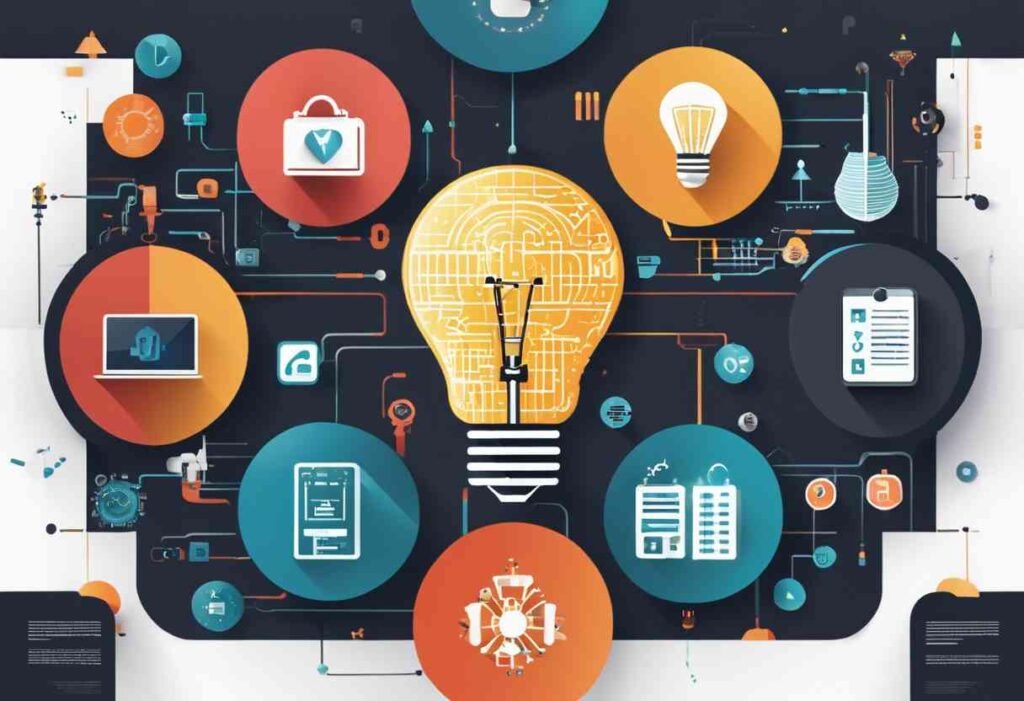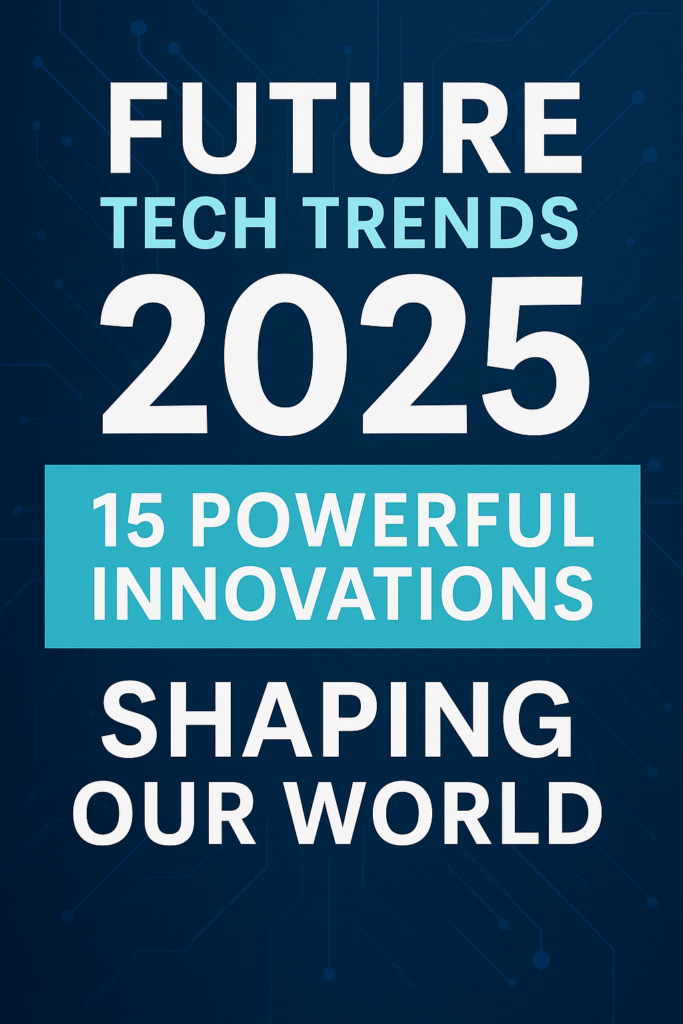Introduction to Innovative AI Projects
Innovative AI projects present unique opportunities for students to explore cutting-edge technologies and contribute to rapidly evolving fields. Implementing AI in final year projects challenges learners to apply theoretical knowledge to practical problems, showcasing their skills and creativity.
Such projects often integrate various aspects:
- Machine Learning: Leveraging algorithms to enable systems to learn from data.
- Natural Language Processing: Understanding and processing human languages.
- Computer Vision: Interpreting visual information from the world.
- Robotics: Combining AI with mechanical systems for automation.
Each area offers substantial scope for innovation and development, enhancing students’ career prospects.
AI Project 1: Predictive Analytics for Healthcare
Predictive analytics in healthcare involves leveraging AI to forecast patient outcomes, enabling proactive medical interventions. This project focuses on using machine learning models to predict disease progression, patient readmissions, and optimal treatment plans.
- Data Collection: Secure patient data from electronic health records (EHRs), clinical trials, and public datasets.
- Feature Engineering: Identify significant features like patient demographics, medical history, and lab results.
- Model Selection: Employ algorithms such as logistic regression, decision trees, and neural networks.
- Model Training and Evaluation: Split data into training/testing sets, use cross-validation, and assess model accuracy with metrics like AUC-ROC.
- Implementation: Deploy the predictive model into healthcare systems for real-time decision support.
AI Project 2: Smart Chatbots for Customer Service
Smart chatbots leverage natural language processing (NLP) and machine learning (ML) to handle various customer inquiries efficiently. Creating a chatbot involves training models on customer interaction data and integrating them into a user-friendly interface.
Key Features:
- 24/7 Availability: Provides support at any time.
- Instant Response: Reduces wait time for customer inquiries.
- Personalization: Offers tailored responses by understanding user preferences.
- Scalability: Manages increasing customer demand without additional human resources.
Benefits:
- Cost Savings: Decreases operational costs by reducing the need for live agents.
- Customer Satisfaction: Enhances user experience through faster resolutions.
- Data Collection: Gathers valuable insights for business improvements.
AI Project 3: Autonomous Vehicles and Traffic Management
Autonomous vehicles represent a fascinating intersection of artificial intelligence and transportation. This project entails:
- Algorithm Development: Implementation of machine learning algorithms for vehicle navigation.
- Sensor Integration: Utilizing LiDAR, GPS, and cameras for real-time environment perception.
- Traffic Prediction Models: Developing AI models to predict and manage traffic congestion.
- Simulation Environments: Creating and testing in virtual environments to simulate real-world conditions.
- Safety Protocols: Ensuring adherence to safety standards and regulatory requirements.
This project offers an exploration into the future of transportation, enhancing both safety and efficiency through advanced AI technologies.
AI Project 4: Sentiment Analysis for Social Media
Sentiment analysis involves determining the emotional tone behind online texts. This project can greatly assist businesses in understanding public opinion on their products or services. Key components to include:
- Dataset Collection: Collect social media posts, reviews, and comments from platforms like Twitter, Facebook, and Instagram.
- Data Preprocessing: Clean and preprocess the data by removing noise, special characters, and irrelevant information.
- Model Selection: Utilize Natural Language Processing (NLP) techniques and machine learning models, such as LSTM, BERT, or transformers.
- Training and Testing: Train the model using labeled data and validate its accuracy through testing.
- Visualization: Implement dashboards for visual representation of sentiment trends over time.
AI Project 5: Personalized Learning through AI in Education
Incorporating AI in education can revolutionize how students learn by offering tailored educational experiences.
- Adaptive Learning Platforms: AI adjusts learning material based on the student’s performance and learning pace.
- Intelligent Tutoring Systems: Provides real-time feedback and personalized instruction.
- Predictive Analytics: Identifies students at risk of falling behind, allowing timely intervention.
- Natural Language Processing (NLP): Enhances language learning and comprehension through AI-powered tools.
- Automated Grading Systems: Reduces teachers’ workload by automating assessment tasks.
This project highlights the potential of AI to create a more efficient, effective, and inclusive education system.
AI Project 6: AI-Powered Recommendation Systems
In this project, students will leverage artificial intelligence to design advanced recommendation systems. These systems analyze vast quantities of data to provide personalized recommendations.
Key Components
- Data Collection: Gather user data from various sources such as browsing history, purchases, and ratings.
- Data Preprocessing: Clean and preprocess data to ensure accuracy and consistency.
- Algorithm Selection: Choose suitable machine learning algorithms such as collaborative filtering, content-based filtering, or hybrid methods.
- Model Training: Train the model on historical data to identify patterns and preferences.
- Evaluation Metrics: Use metrics like MAE, RMSE, and Precision/Recall to evaluate model performance.
Understanding user needs and preferences is crucial for refining recommendations and improving user experience.
AI Project 7: Intelligent Home Automation Systems
Home automation systems streamline everyday tasks using AI. They enhance security, energy efficiency, and convenience. This project involves developing an intelligent system that integrates with various home devices.
Key Components:
- Sensor Integration: Use sensors for real-time data collection.
- Machine Learning Algorithms: Implement to predict user behavior.
- Voice Recognition: Integrate voice control using natural language processing.
- IoT Connectivity: Ensure seamless communication between devices.
Benefits:
- Energy Management: Automated lights and thermostats reduce energy consumption.
- Enhanced Security: Smart cameras and locks improve safety.
- User Convenience: Personalized settings for individual preferences.
AI Project 8: Fraud Detection with Machine Learning
Fraud detection remains critical across various industries, including finance and e-commerce. Utilizing machine learning (ML) to identify fraudulent activities enables enhanced security measures.
Key Components:
- Data Collection: Collect historical data, including transaction records, user behavior, and known fraud cases.
- Data Preprocessing: Clean, normalize, and segregate data to handle imbalances between fraud and genuine cases.
- Feature Engineering: Detect patterns, anomalies, and key indicators that signify fraudulent activities.
- Model Selection: Use algorithms such as Random Forest, Gradient Boosting, or Neural Networks.
- Evaluation Metrics: Focus on precision, recall, F1-score, and ROC-AUC to assess model performance.
This project brings substantial real-world applications and offers solid experience in the financial technology domain.
AI Project 9: AI-Enhanced Cybersecurity Solutions
Incorporating AI into cybersecurity frameworks offers advanced protection against growing cyber threats. Students can explore:
- Intrusion Detection Systems (IDS): Utilize machine learning to detect anomalous activities and identify potential threats.
- Threat Intelligence: Employ AI to analyze vast data sets and forecast emerging cyber threats.
- Phishing Detection: Develop AI algorithms to recognize and filter phishing attempts in emails and websites.
- Behavioral Analysis: Implement AI to monitor user behavior and flag deviations indicating compromised accounts.
- Automated Incident Response: Design systems that use AI to automatically respond to and mitigate cyber incidents.
AI Project 10: Natural Language Processing for Document Summarization
Natural Language Processing (NLP) for document summarization involves creating models to generate concise and coherent summaries from longer texts. These summaries should capture the key points while maintaining readability.
Key Components
- Data Collection: Large datasets containing documents and their summaries.
- Preprocessing: Cleaning and tokenizing text data.
- Model Selection: Utilizing algorithms like Transformer models, BERT, or GPT-3.
- Training: Extensive training to handle diverse topics and languages.
- Evaluation: Metrics such as ROUGE or BLEU scores for effectiveness.
This project can significantly aid in managing information overload and improving accessibility.
Conclusion: Future of AI in Real-World Applications
AI continues to revolutionize various industries. Its potential in healthcare, finance, and transportation demonstrates remarkable possibilities.
- Healthcare: Enhanced diagnostics, personalized treatment plans, and robotic surgeries.
- Finance: Fraud detection, algorithmic trading, and personalized financial advice.
- Transportation: Autonomous vehicles, traffic management, and predictive maintenance.
AI’s integration into day-to-day operations enhances efficiency, accuracy, and innovation. Emerging technologies like quantum computing and advanced neural networks promise even greater advancements. The trajectory suggests a landscape where AI is indispensable, driving unprecedented growth and transformation across sectors.




